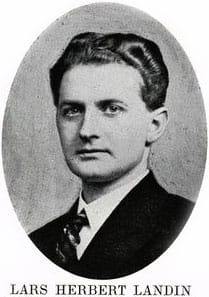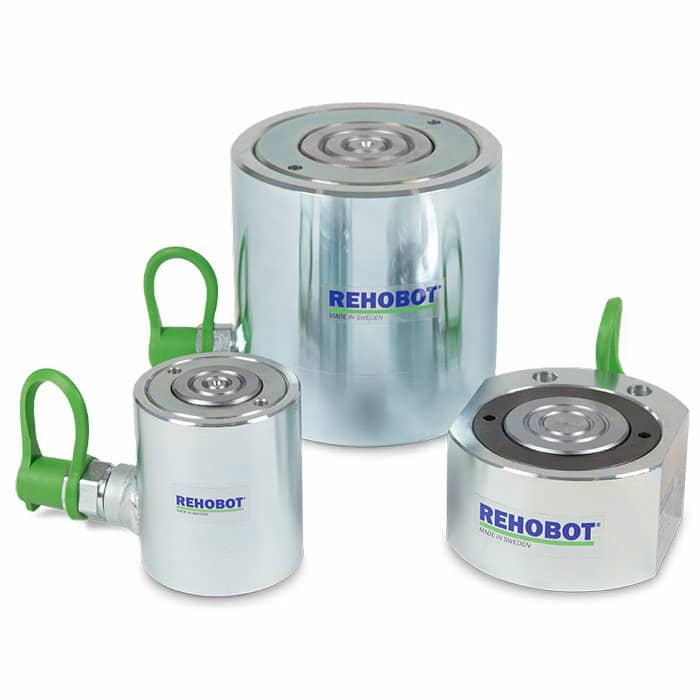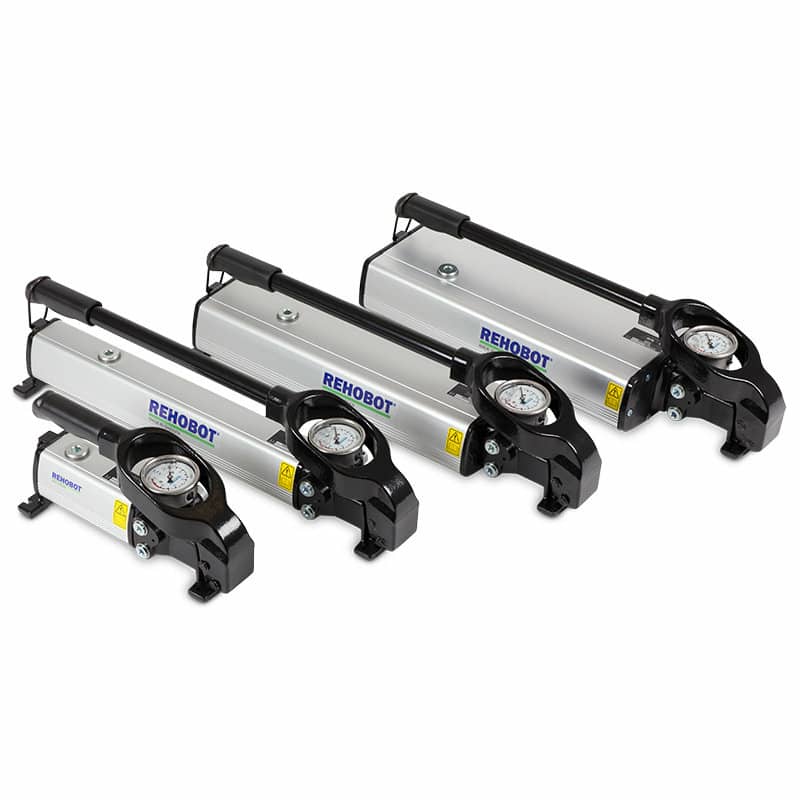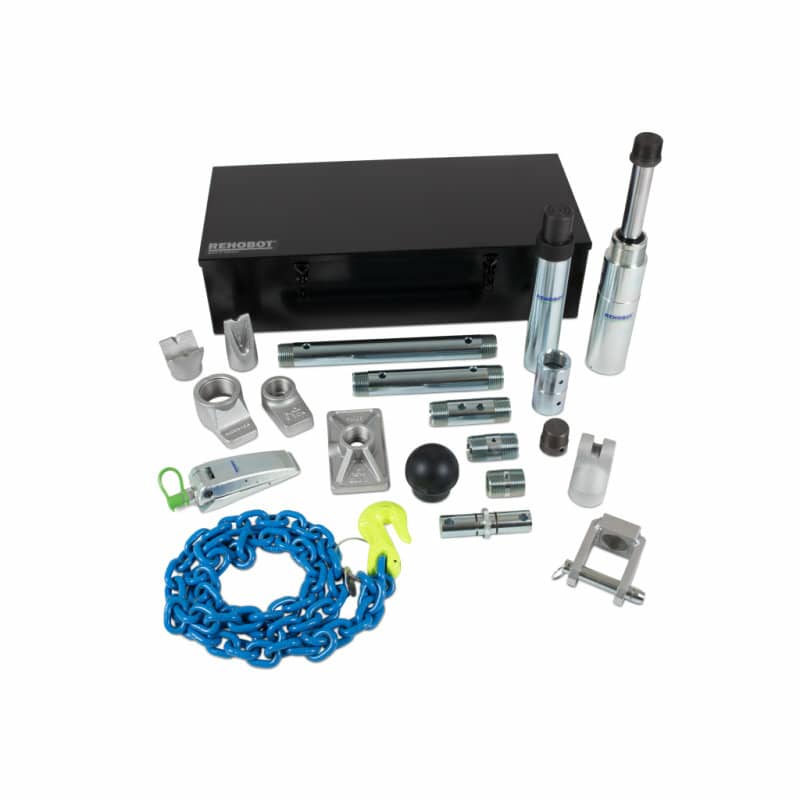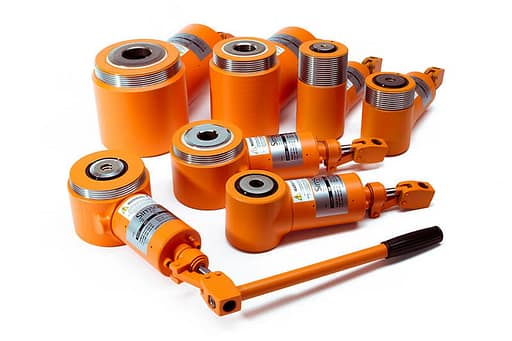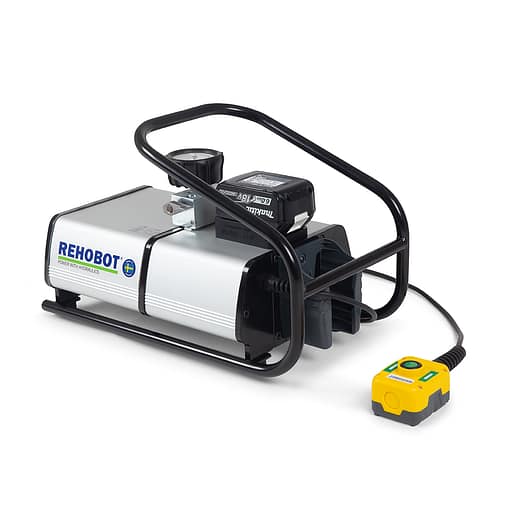A century-long journey of innovation and strength
Rehobot Hydraulics’ history dates back to the 1920s, when Herbert Landin started Sweden’s first production of jacks. Through decades of technical development, innovation and co-operation with large industrial companies, the business has grown from a small workshop in Eskilstuna to an international player in hydraulics. The story of Rehobot is the story of Swedish engineering, entrepreneurial spirit and a constant quest for reliable solutions with power in focus.
2010
In 2010, NIKE Hydraulics went bankrupt due to a tight liquidity situation. The Obadja Group acquired its bankruptcy estate and the company was renamed REHOBOT Hydraulics. REHOBOT introduces a production philosophy based on LEAN. In 2011, fasteners were replaced on a segment of the Öland Bridge using equipment from REHOBOT Hydraulics, when four CX cylinders were used to provide a combined lifting capacity of 1000 tonnes. REHOBOT Hydraulics sells products to customers in over 50 countries around the world. The company now has a new, stronger ownership, an ambition to grow and develop and, above all, a bright confidence to continue the company’s exciting and rich journey.

2000
NIKE’s environmental management system is certified according to ISO 14001. Volkswagen, Ford, Scania and many other automotive customers choose NIKE as an OEM supplier of tools and jacks. At the same time, the company needed additional operational space and purchased an 8,000 square metre production facility in Eskilstuna.

1990
The next few years were turbulent, characterised by several restructurings and changes of ownership. This culminated in the bankruptcy of NIKE’s parent company in 1992, following various property speculations. But out of the ashes rose NIKE Hydraulics AB in 1993 with three product lines: industrial hydraulics, rescue hydraulics and hydraulic lifting equipment. The foundation for what became today’s REHOBOT Hydraulics AB was laid.
During the 1990s, NIKE established subsidiaries in the United States (NIKE Hydraulics Inc.) and England (NIKE Power Equipment Ltd.) During this time, NIKE’s quality management system was ISO 9001 certified. NIKE supplies hydraulics for a 32,000 tonne press used at the Centre for Particle Physics in CERN, Switzerland.
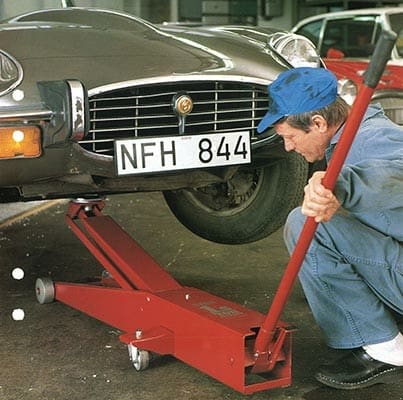
1980
In 1980, the company reached another milestone – 20 million jacks produced. In 1981, the Powerline and Dataliner directional systems were sold to AGA Geotronics / Nicator, which was thus further developed. In 1986, the Cooperative Association sold NIKE to private parties in three parts: the BT subcontracting business to one party, the foundry business to another and finally NIKE itself to a third party. In 1988, NIKE acquired its competitor Bahco Kraftverktyg, which included a product line of hydraulic rescue tools.

1970
In 1976, NIKE became part of AB Bygg- och Transportekonomi (BT), a company in the KF group, which is best known for its production of forklift trucks. The idea was that NIKE’s knowledge of hydraulics would be utilised with, among other things, the production of pallet trucks and hydraulic units for forklift trucks. At the same time, the production of garage jacks took off and the I-PAK programme was launched. A new milestone was passed in 1977, when a new lifting record was set when the 10,500-tonne water reservoir was lifted during the construction of a water tower in Saudi Arabia.

1960
The 1960s saw the development of a more uniform industrial programme of high-pressure hydraulic pumps and cylinders. It was used at an early stage for, among other things, automotive steering systems, such as directional benches for passenger cars. During the decade, an OEM agreement for jacks was also concluded with Scania. By this time, the factory was becoming too small, and in 1968 a building was purchased in Vilsta, where most of the hydraulics production was concentrated.
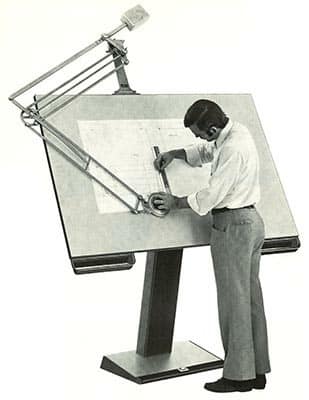
1950
The years 1956-57 are milestones in the company’s history. This was when the great “giant lift” of the 3200 tonne water reservoir to Örebro water tower was carried out – a lifting record to date. The lift was carried out in 10 cm stages, and the total lift from the ground was 33 metres. In the mid-1950s, a product family was developed that would become another long-lasting success – hydraulic drawing tables. They were produced in a range of designs, such as the President, Medium and Nikette. By 1958, 196 people were employed in the workshop and 82 in the foundry. In the same year, the standard production of jacks was moved from Kungsgatan to Björksgatan.
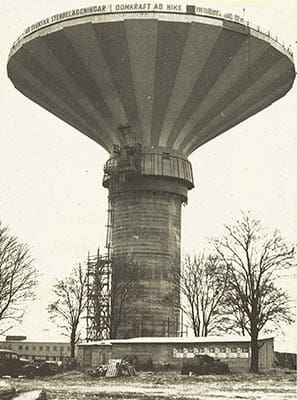
1940
During the late 1930s and early 1940s, Domkraft AB NIKE experienced significant growth in sales volumes, with a growing share in the European market. This led to the appointment of an export manager in 1940, a key figure in driving sales in Western Europe. The company developed further with the establishment of its own foundry for mechanical components. The order book continued to expand, and in midsummer 1941 Domkraft AB NIKE was acquired by Kooperativa Förbundet (KF), now best known for its subsidiary Coop Butiker & Stormarknader AB. Investments were made in both production equipment and buildings, and the company introduced new products. During the Second World War, NIKE played a vital role in Swedish defence, including the manufacture of shell casings and concrete gun carriages, i.e. the rear ends of artillery tanks.
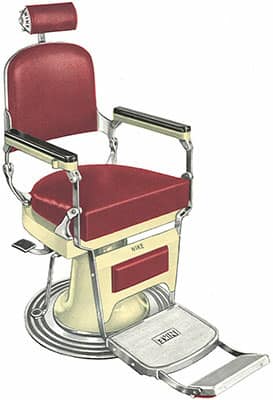
1930
In 1932, the first hydraulic jack was manufactured, and at the same time the first OEM agreement was signed with Volvo Trucks. In 1937, the business was incorporated and changed its name to Domkraft AB NIKE, which was the name and brand that would be used for a long time to come. At the same time, the company moved to new premises on Kungsgatan in Eskilstuna, and the entire workforce at that time was 12 people. In the 1930s, hydraulic hairdressing chairs were launched – a classic success product that is still in use in many hairdressing salons. They were manufactured and sold for many years afterwards. They are like vintage cars – more and more sought after over the years!
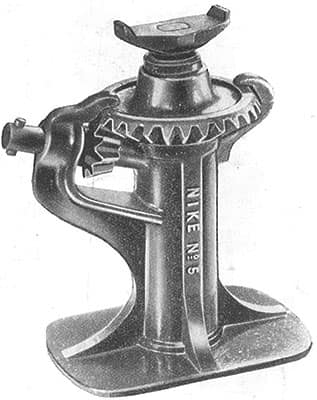
1920
In 1924, Herbert Landin Domkraftfabrik was founded by Herbert Landin, then only 22 years old. Initially, the sale of ‘hobo stubble’ for shoe soles contributed to the real business – the manufacture of mechanical jacks. Towards the end of the 1920s, the company began supplying mechanical jacks to Volvo, its first major customer. Herbert Landin was then the first in Sweden to manufacture jacks, which were marketed under the NIKE brand.
